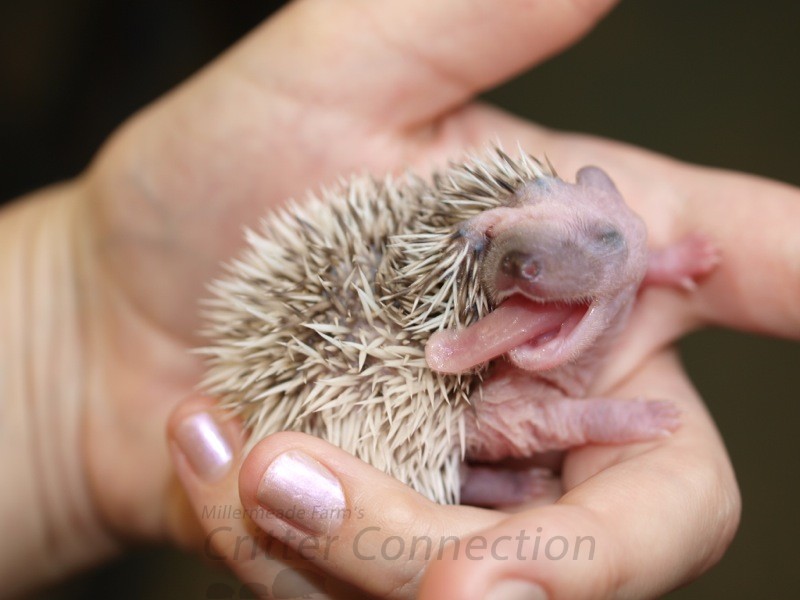Last Updated on August 28, 2022.
Introduction
- Self-anointing is probably the strangest and most unexplainable of all hedgehog behaviors.
- It is completely normal and causes no harm to your hedgehog.
- Some references refer to self-anointing as “anting”. This term refers to a similar behavior in birds, where certain species of birds will rub ants onto their bodies in order to apply the formic acid ejected by the ants into its feathers. Anting in birds, as with hedgehogs, is a form of self-care.
Description
- Hedgehogs will lick or chew the object of interest and create foamy saliva or lather which they will then deposit onto various parts of their body.
- It is not uncommon for new hedgehog owners to think their hedgehog is having a seizure or is vomiting.
- Vomit tends to be more slimy than frothy and it is usually a result from motion sickness.
- Substances that can provoke self-anointing include: chemicals, perspiration, leather, perfume, hand lotion, hair products, soaps, traces of food on your hands (especially garlic), and excrement.
- Hedgehogs that anoint frequently or that anoint with a particularly colorful or smelly substance may need a bath.
- The color of the anointing froth is dependent on the source of the anointing substance. For instance: blueberries produce blue froth and a new food will produce the same color froth as the food.
Anointing Process
- Hedgehogs can self-anoint at a very early age, even before their eyes are fully opened.
- The first sign that a hedgehog is going to self-anoint is that they will show a fascination with a particular odor or taste.
- Your hedgehog is likely to chomp its teeth or chew at the substance to create the anointing froth.
- You may see your hedgehog twist and contort in a variety of funny positions as it spreads this foamy saliva on its body using its surprisingly long tongue.
- Many hedgehogs become so engrossed with this activity that they become oblivious to anything going on around them!
Reasons for Anointing
- The reasons hedgehogs self-anoint are still unknown.
- Since anointing is usually related to a new or pleasant smell, it is not uncommon for them to anoint their human, new objects in their habitat or new foods only a couple of times.
- Some people believe anointing is a form of scent camouflage designed to cover up their own scent in the environment for protection.
- Others believe the hedgehogs like the scent so much that they want it on their body similar to our “perfume”.
- Hedgehogs are resistant to many toxins and one theory is that hedgehogs spread toxins on their spines as added protection or as a repellent to its enemies.
- Another possible explanation is that they are trying to remember a particular smell by mixing it with the saliva and then depositing it on the spines.
- Male hedgehogs tend to anoint more than females, but the reason for this trend is unknown.
- Light-colored hedgehogs tend to look messier with anointing and anoint more frequently than darker hedgehogs.
- Many believe the lighter colored hedgehogs are trying to camouflage with their environment more so than the darker hedgehogs.
- When there isn’t anything new and your hedgehog is accustomed to their surroundings, they may not anoint as much.
- When there isn’t anything new and your hedgehog is accustomed to their surroundings, they may not anoint as much.
VIDEO.: Hedgehog not Self Anointing as much as before
VIDEO.: Hedgehog Self Anointing Demonstration
VIDEO.: GO, GO, GO… Just for fun, self anointing hedgie
Caution
- Hedgehogs may lick and self-anoint with things that could be poisonous to them.
- Be cautious of houseplants, cleaning chemicals, feces of other animals, etc.
Cleaning After Anointing
- The foam spittle on the hedgehog quills is not dangerous.
- Some anointing spots are simply saliva. It dries clear and doesn’t require removal for the hedgehog to appear normal.
- It is your discretion if you don’t mind small amounts on the quills and you leave it, or if you prefer to wipe or wash it off.
- Some anointing material will simply wipe off with a damp paper towel.
- Never use any type of cleaning wash or soap that is not ingestible because your hedgehog may self-anoint with that new smell.
- Some particularly messy deposits on the quills may require a bath to thoroughly clean off the anointing material.
- The color of the hedgehog and the substance used to anoint plays a part in dried spittle visibility.
- Some substances may stain light colored hedgehogs but staining is not typical.
Contributor: Gail Smith, Nicole Gendler Martin, Formerly of Hedgehogs in Space, Melissa Ramos, Coley Emde
List of References:
Hedgehog Valley. (2002, February 15). What is self-anointing? Retrieved from http://hedgehogvalley.com/annoint.html
Hooi, C.K. (2006, March 19). Hedgehog Self-Anointing! [Web log post]. Retrieved from http://whatthepets.blogspot.com/2006/03/hedgehog-self-anointing.html
MacNamara, B. (2012, March 31). Hedgehog FAQ [5/7] – Care and Understanding [Usenet Post]. Retrieved from http://www.faqs.org/faqs/hedgehog-faq/part5/section-2.html#b
Riddle, C. (2012). What is Self Anointing? [Web log post]. Retrieved from http://www.riddleshedgehogs.com/frequently-asked-questions/what-is-self-anointing
Shauna, K. (2011, August 31). Hello Humans! [Web log post]. Retrieved form http://aeroplaneoverthec.wordpress.com/tag/hedgehog-self-anointing/
Simmons, K.E.L (1966), Anting and the problem of self-stimulation. Journal of Zoology, 149: 145–162. doi: 10.1111/j.1469-7998.1966.tb03890.x






